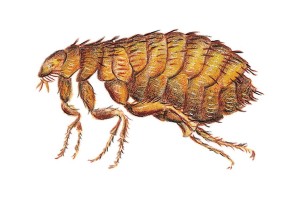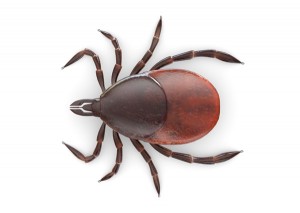Spring has sprung – and you may or may not have heard that fleas and ticks appear in as low as 4 degree celsius weather! We’ve definitely reached that time. Do you know what you’re up against this flea and tick season? Let’s get armed with knowledge and fight these suckers before they call your pooch their new home!
What is a flea?
Even though this insect is wingless, it can jump like any NBA player. Fleas can be tough to spot – they measure in at 1/16 to 1/8-inches long. With a lifespan of about 100 days, fleas like to settle in and stay on one dog. That means once it jumps on your dog, the flea will stay there until it dies. And why would it go anywhere else? Your dog has everything it needs to live comfortably – it feeds off your dog (yum!) and starts having babies as it finishes eating. For several weeks, they will lay about 20 to 40 eggs a day. And these eggs will go wherever the dog goes, so shed hair that contains eggs can land anywhere. These annoying creatures can carry nasty things like tapeworm to pass along to your dog.
And how about ticks?
Those pests are cousin to spiders, the tick is considered to be an arachnid (thanks to their eight legs). It’s bigger than the flea, measuring in at 1/4 to 1/8-inches long. Ticks don’t mind moving from animal to animal – they aren’t too picky were they set up house. In fact, ticks can even be found on snakes, lizards and humans. Their life cycle can last anywhere from three weeks to three years. You won’t think that these little blood suckers would be picky, but they are. They will wait until they find the right home, and then leave to find another host to sponge off of. They just can’t spend too long on one dog. As larvae, nymphs and adults, they will go from host to host through each life stage.
And let’s talk about eggs. After feeding off the dog, the female tick will fall from its host and lay thousands of eggs at one time (yikes!). Once it has finished with this task, the tick will die, leaving behind a new generation to carry on its dirty work. Happiest in cold temperatures, the tick doesn’t mind the winter climates. As for diseases, the tick carries around plenty of potential deadly diseases, including Lyme disease and Rocky Mountain spotted fever.
Now that you’re properly freaked out – it might be a great time to book a visit to your vet for that springtime pest prevention! 🙂









Leave A Comment
You must be logged in to post a comment.